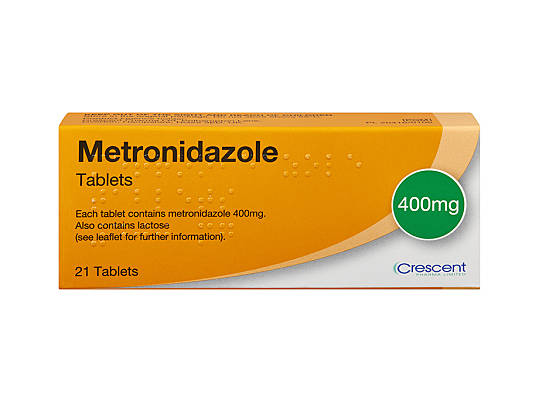What Is The Difference Between Thrush And Bacterial Vaginosis (BV)?

Medically reviewed by
Dr Kathryn BasfordLast reviewed: 26 May 2022
Thrush and bacterial vaginosis (BV) are vaginal infections that can cause unusual vaginal discharge. Thrush is a yeast infection whilst BV is a vaginal infection that is caused by a change in bacteria. Thrush and BV have slightly different symptoms but you should speak to a doctor if you are not sure. It is possible to have thrush and BV at the same time.
Do I have thrush or bacterial vaginosis (BV)?
Some of the symptoms of thrush and BV can be similar, such as unusual vaginal discharge. The biggest difference between thrush and BV is the colour and smell of your vaginal discharge. It is important to know the difference between symptoms, as this could help you understand whether you have thrush or BV. You can also speak to a doctor about your symptoms.
Symptoms of thrush
The main symptoms of vaginal thrush include:
- stinging when you pee and during or after sex
- irritation and itching in and around your vagina
- white vaginal discharge with no smell, this is often referred to as looking like cottage cheese
Thrush does not always have symptoms. You may have some of these symptoms or all of them.
Symptoms of BV
The main symptom of BV is unusual discharge. Unlike thrush, BV is not usually a cause of itching or soreness in your vagina. Whilst thrush discharge tends to have no smell, BV can cause a strong smelling discharge. This is typically referred to as a strong fishy smell. Your discharge may change colour or consistency, such as becoming watery or greyish.
BV does not always cause symptoms. 50% of all women who have BV do not get any symptoms at all.
Can you have thrush and BV at the same time?
Yes, you could get thrush and BV at the same time. Understanding your symptoms can help if you think you have thrush or BV. You can also speak to a doctor, who may want to run some tests. A doctor can give you the right treatment based on your symptoms. If they think you have thrush and BV, they can treat both.
How to prevent thrush and BV
Some women are more likely to keep getting vaginal infections. This is known as a recurrent vaginal infection. You can reduce the chances of getting thrush and BV by making some lifestyle changes, such as:
- taking showers rather than baths
- drying your groin properly after the shower
- stopping smoking, as this can upset the natural balance of your vagina
- washing your underwear with non bio washing detergent
- only using plain unperfumed soap and water when washing your vagina
- avoiding shower gel, bubble bath, shampoo, and perfumed soaps near your vagina
- not using vaginal deodorants, washes, or douches
- avoiding the use of antiseptic liquid if you have a bath
- wearing cotton underwear
If you keep getting thrush or BV, you should speak to your doctor.
How to prevent thrush and BV coming back after treatment
When you are taking thrush or BV treatment, you should avoid having sex until your treatment has finished and you feel better. This can prevent it from coming back. It can also prevent you from passing thrush on to your partner.
Although thrush and BV are not STIs, men can get thrush and pass it back to their partner during sex. Men cannot get BV as it is a vaginal infection but you can pass it to another woman.
How to treat thrush and bacterial vaginosis infections
The type of treatment you need will depend on whether you have thrush or BV. The usual treatment for thrush is antifungal medication. This can be found in tablet and pessary form, or an external cream. BV happens when the bacteria in your vagina changes. This means you need an antibiotic to treat BV. We have antibiotic tablets, gel, or cream to treat BV.
Treatment for thrush
To get rid of thrush, you can use antifungal medication. This works because thrush is caused by yeast, which is a type of fungus. Thrush treatment comes in a tablet you take by mouth called fluconazole or a pessary that is inserted into your vagina, called clotrimazole. You can also get clotrimazole 1% cream to treat thrush and relieve external vaginal itching.
- Clotrimazole 1% cream should only be used externally and can treat thrush in women. It can stop the fungus that causes thrush from multiplying. The cream can be used up to 3 times a day and the usual treatment course is 2 weeks.
- Clotrimazole 500mg pessary and 1% cream is a combination treatment used to treat thrush in women. The cream is used externally and can help with the symptoms of thrush such as itching and soreness. The single use pessary is inserted into your vagina at bedtime. Your medication packet contains an applicator to insert the pessary into your vagina. You should keep it in overnight.
Fluconazole is a single dose treatment, which means you only take one 150mg tablet to treat thrush. This comes in tablet form and can be taken at any time, after or before a meal.
Your doctor can help you choose the right treatment for thrush depending on your symptoms and preference.
from £9.50
from £12.20

No results found.
Please check your spelling or try another treatment name.
Treatment for BV
BV is a bacterial infection that is caused when the bacteria in your vagina changes. This is not an STI, but sometimes sex can trigger it. To get rid of BV, you need antibiotics. You can take tablets by mouth called metronidazole. You can also use an internal vaginal gel called Zidoval or Dalacin cream, which is also inserted into your vagina.
- Metronidazole tablets are an antibiotic tablet that you take by mouth. They can stop the bacterial growth of bacteria in your vagina. Depending on how often you get BV, there are 2 ways to use metronidazole tablets. You can be prescribed a 2g dose that you take all at once. You can also take metronidazole 400mg twice daily for a week. Your doctor will tell you how to take metronidazole to treat BV.
- Zidoval gel is a branded internal vaginal gel to treat BV. It contains the active ingredient metronidazole, which means it works the same way to treat BV. Zidoval gel is inserted into your vagina so it can treat the bacteria at the source. The usual dose is 5g of gel for 5 days. It is best to insert the gel at nighttime.
- Dalacin cream is also an internal vaginal gel used to treat BV. It contains the active ingredient clindamycin, which is also an antibiotic. Dalacin cream should be used for 1 week and the usual dose is 5g each night.
Your doctor can help you choose the right treatment if you have BV.
from £14.00
from £28.00

No results found.
Please check your spelling or try another treatment name.

Dr Kathryn Basford is a qualified GP who works as a GP in London, as well as with ZAVA. She graduated from the University of Manchester and completed her GP training through Whipps Cross Hospital in London.
Meet our doctorsArticle created: 26 May 2022
Last reviewed: 26 May 2022
-
Bacterial vaginosis, NHS [accessed May 2022]
-
Dalacin Cream 2%, Summary of Product Characteristics, EMC [accessed May 2022]
-
Metronidazole, NHS [accessed May 2022]
-
Thrush in men and women, NHS [accessed May 2022]
-
Vaginal discharge, NHS [accessed May 2022]
Bacterial vaginosis can be treated with antibiotics and gels. Asda Online Doctor by ZAVA offers both of these options for treating infections.




(Reviews are for ZAVA UK)


GMC: 7074021

GMC: 6149061

GMC: 7085115











